
Vermilion is a color family and pigment most often used between antiquity and the 19th century from the powdered mineral cinnabar. It is synonymous with red orange, which often takes a modern form, but is 11% brighter.
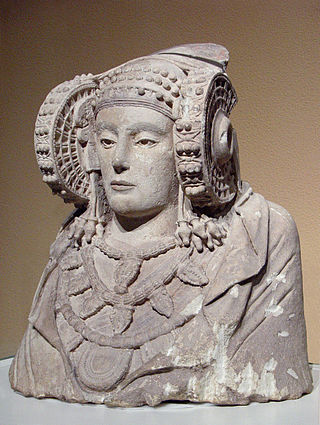
The Lady of Elche is a limestone bust that was discovered in 1897, at La Alcudia, an archaeological site on a private estate two kilometers south of Elche, Spain. It is now exhibited in the National Archaeological Museum of Spain in Madrid.

Guido Reni was an Italian painter of the Baroque period, although his works showed a classical manner, similar to Simon Vouet, Nicolas Poussin, and Philippe de Champaigne. He painted primarily religious works, but also mythological and allegorical subjects. Active in Rome, Naples, and his native Bologna, he became the dominant figure in the Bolognese School that emerged under the influence of the Carracci.

Art forgery is the creation and sale of works of art which are falsely credited to other, usually more famous artists. Art forgery can be extremely lucrative, but modern dating and analysis techniques have made the identification of forged artwork much simpler.

Music engraving is the art of drawing music notation at high quality for the purpose of mechanical reproduction. The term music copying is almost equivalent—though music engraving implies a higher degree of skill and quality, usually for publication. The name of the process originates in plate engraving, a widely used technique dating from the late sixteenth century. The term engraving is now used to refer to any high-quality method of drawing music notation, particularly on a computer or by hand.

Silverpoint is a traditional drawing technique first used by medieval scribes on manuscripts.
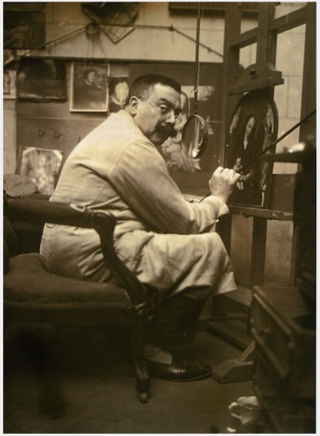
Josephus Maria Van der Veken was a Belgian art restorer, copyist, and art forger who mastered the art of reproducing the works of early Netherlandish painters.
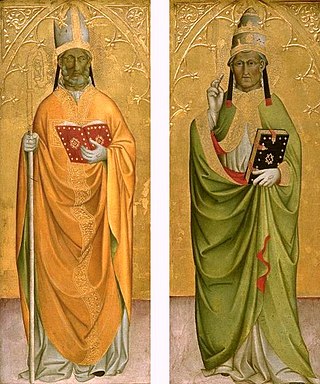
Cennino d'Andrea Cennini was an Italian painter influenced by Giotto. He was a student of Agnolo Gaddi in Florence. Gaddi trained under his father, called Taddeo Gaddi, who trained with Giotto.

Copying Beethoven is a 2006 American dramatic film released by Metro-Goldwyn-Mayer and directed by Agnieszka Holland which gives a fictionalized take on the triumphs and heartaches of Ludwig van Beethoven's last years.
Working in layers is a system for creating artistic paintings that involve the use of more than one layer of paint.

The 16th-century portrait Mona Lisa, or La Gioconda, painted in oil on a poplar panel by Leonardo da Vinci, has been the subject of a considerable deal of speculation.
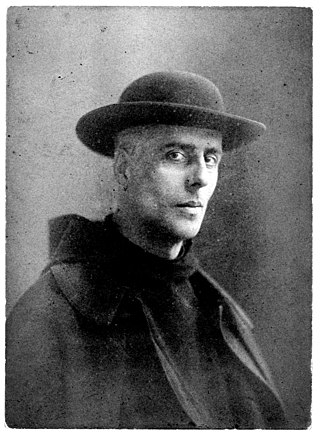
Johannes Sixtus Gerhardus (Jan) Verkade, afterwards Willibrord Verkade O.S.B., was a Dutch Post-Impressionist and Christian Symbolist painter. A disciple of Paul Gauguin and friend of Paul Sérusier, he belonged to the circle of artists known as 'Les Nabis.' Of a Dutch anabaptist background, his artistic and spiritual journey led him to convert to Roman Catholicism, and to take Holy Orders as a Benedictine monk, taking the religious name Willibrord. He entered the Archabbey of Beuron and continued his work in a religious context, working closely with Desiderius Lenz, leader of the Beuron Art School. He worked throughout Europe and had an important influence on the continuing development of the new Benedictine Art.

Sir Peter Paul Rubens was a Flemish artist and diplomat from the Duchy of Brabant in the Southern Netherlands. He is considered the most influential artist of the Flemish Baroque tradition. Rubens's highly charged compositions reference erudite aspects of classical and Christian history. His unique and immensely popular Baroque style emphasized movement, colour, and sensuality, which followed the immediate, dramatic artistic style promoted in the Counter-Reformation. Rubens was a painter producing altarpieces, portraits, landscapes, and history paintings of mythological and allegorical subjects. He was also a prolific designer of cartoons for the Flemish tapestry workshops and of frontispieces for the publishers in Antwerp.

De pictura is a treatise or commentarii written by the Italian humanist and artist Leon Battista Alberti. The first version, composed in Latin in 1435, was not published until 1450. It is one of his three treatises on art; the other two are De statua and De re aedificatoria, that would form the Renaissance concept for the fine arts: painting, sculpture, and architecture.

Authenticity in art is manifest in the different ways that a work of art, or an artistic performance, can be considered authentic. The initial distinction is between nominal authenticity and expressive authenticity. In the first sense, nominal authenticity is the correct identification of the author of a work of art; of how closely an actor or an actress interprets a role in a stageplay as written by the playwright; of how well a musician's performance of an artistic composition corresponds to the composer's intention; and how closely an objet d’art conforms to the artistic traditions of its genre. In the second sense, expressive authenticity is how much the work of art possesses inherent authority of and about its subject, and how much of the artist's intent is in the work of art.
Imitation is the doctrine of artistic creativity according to which the creative process should be based on the close imitation of the masterpieces of the preceding authors. This concept was first formulated by Dionysius of Halicarnassus in the first century BCE as imitatio, and has since dominated for almost two thousand years the Western history of the arts and classicism. Plato has regarded imitation as a general principle of art, as he viewed art itself as an imitation of life. This theory was popular and well accepted during the classical period. During the Renaissance period, imitation was seen as a means of obtaining one's personal style; this was alluded to by the artists of that era like Cennino Cennini, Petrarch and Pier Paolo Vergerio. In the 18th century, Romanticism reversed it with the creation of the institution of romantic originality. In the 20th century, the modernist and postmodern movements in turn discarded the romantic idea of creativity, and heightened the practice of imitation, copying, plagiarism, rewriting, appropriation and so on as the central artistic device.
Leonardo da Vinci's Mona Lisa is one of the most recognizable and famous works of art in the world, and also one of the most replicated and reinterpreted. Mona Lisa replicas were already being painted during Leonardo's lifetime by his own students and contemporaries. Some are claimed to be the work of Leonardo himself, and remain disputed by scholars. Prominent 20th-century artists such as Marcel Duchamp and Salvador Dalí have also produced derivative works, manipulating Mona Lisa's image to suit their own aesthetic. Replicating Renaissance masterpieces continues to be a way for aspiring artists to perfect their painting techniques and prove their skills.
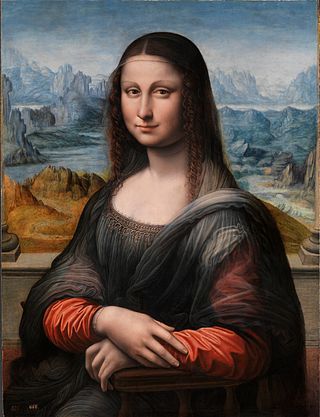
The Prado Mona Lisa is a painting by the workshop of Leonardo da Vinci and depicts the same subject and composition as Leonardo's better known Mona Lisa at the Louvre, Paris. The Prado Mona Lisa has been in the collection of the Museo del Prado in Madrid, Spain since 1819, but was considered for decades a relatively unimportant copy. Following its restoration in 2012, however, the Prado's Mona Lisa has come to be understood as the earliest known studio copy of Leonardo's masterpiece.
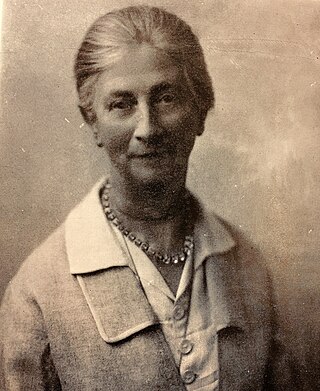
Katherine Elizabeth Wallis (1861–1957) was a Canadian sculptor, a watercolor painter and poet. She traveled all over the world, observing art, studying sculpture and advancing her artistic career. Wallis is best known for bronze sculptures of animals and infants.
After is an art convention used in the titles and inscriptions of artworks to credit the original artist in the title of the copy. Often the title of the original work is retained, for example an interpretation by Rembrandt of da Vinci's The Last Supper becomes The Last Supper, after Leonardo da Vinci. The addendum, sometimes termed an attribution qualifier, may be used by the artist making the copy or a later curator or academic and features in the linked records that make up the Cultural Objects Name Authority. The term may be used regardless of how similar the two works appear. Curators have sometimes referred to the resulting imitation works as "after-[original artist's name]s", with works inspired by Albrecht Dürer being after-Dürers. In some instances, artists have signed works made after the manner of their own indicating their approval of the copy.


















